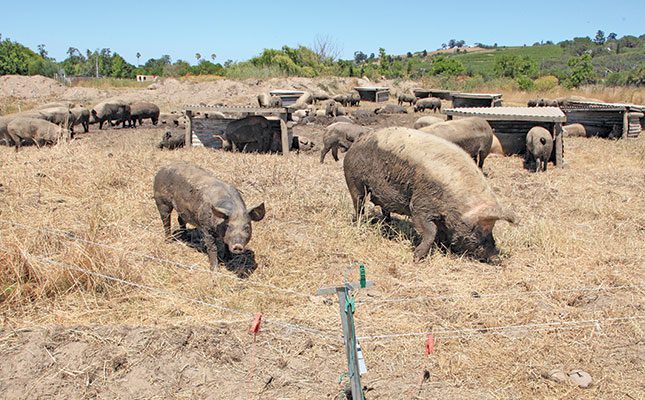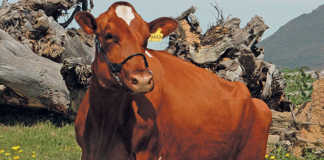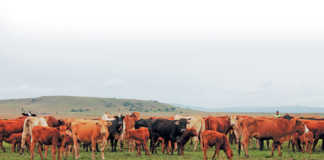
Photo: FW Archive
Pig farming is often a popular choice for new farmers, and its appeal often stems from a combination of practical, economic, and lifestyle factors.
Some of the appeal has its roots in reality, but farmers must remember that all farming operations require careful research. Despite this, it is important to consider what some of the appeal is.
READ Free-range pigs: lessons learnt on the way to commercial success
For example, pigs have relatively short gestation periods and reach market weight faster compared to other livestock species, such as cattle.
This means more frequent income for farmers. Pigs are also known for their efficient feed conversion, meaning they can convert feed into body mass quite effectively.
As most farmers know, feed efficiency usually translates to lower costs per unit. (Of course, there are other variables to consider than simply feed efficiency.)
Affordable Protein
As an affordable protein option when compared with lamb or beef, there is also perceived consumer demand for pork, which means that new farmers often believe that there is always a market for their product.
There is also the belief that you can run a profitable pig operation at a small scale. While this may be true for some piggeries, it is not true across the board, and it is important to remember that the more pigs you produce, the less they cost per unit.
This means that your pork may reach the market at a more affordable price, thus seeing an increase in demand.
However, the opposite may be true with a smaller herd, and your pork may thus then have to be marketed as niche (organic or free-range pork, for example).
Some of the appeal is also the belief that pigs can be raised on any food product. This is not true, particularly if producing pigs for the formal market.
It is very important that your pigs are fed nutritious food that is healthy for the growing pigs and for the end consumer.
Compared to some other livestock species, pigs are often considered easier to handle and manage. This can be appealing to new farmers who may be gaining experience in livestock management.
But as many pig farmers will tell you, pigs can be difficult to raise and manage, particularly as it pertains to biosecurity.
I have spoken to pig farmers that have lost hundreds of pigs because of mismanagement; these farmers have since improved their management practices, but the belief that you can simply allow pigs to survive in a pen on kitchen scraps is unfounded, particularly if you’re targeting the formal market.
Different types of housing
The type of housing you choose for your pigs depends on various factors, including the number of pigs you plan to raise, the climate in your area, available resources, and management practices.
It also depends on what type of market you are targeting; if, for example, you want to market your pigs as organic or free range, there are specific guidelines and regulations to consider.
For instance, in pasture-based or free-range systems, pigs have access to open areas where they can graze and forage. This system is suitable for smaller-scale, more extensive farming operations.
READ Intensive or free-range pig farming?
Electric fencing is often used to define the boundaries. Keep in mind, however, that this kind of system opens your operation up to various challenges, such as predation. Moreover, with African swine fever rampant, it is almost always advised that pigs are kept indoors or in clearly defined boundaries separate from possible contamination from the outside world.
Deep bedding systems are the opposite of pasture-based production, and pigs are kept in indoor facilities with a thick layer of bedding material such as straw, hay, or wood shavings. The bedding provides insulation, helps manage waste, and contributes to pig comfort.
It is important that the bedding is changed regularly, however, and as with all other production systems, biosecurity is essential to prevent the spread of disease.
In a confined system, for example, disease is more likely to rapidly spread throughout the herd, and it is thus important that you keep a close eye on the health of your pigs, and to isolate any animal that may appear sick.
Confinement buildings may have slatted floors instead of bedding, which allows manure to drop through, separating it from the living space. This is easier to manage than bedding, as cleaning is perhaps less frequent.
Keep in mind that in any confinement system, proper ventilation is absolutely essential. Poor ventilation can lead to sickness, injury or death of animals in your herd.
Moreover, if your animals are completely confined, and cut off entirely from the outside air, you need a properly climate-controlled environment.
Biosecurity also remains essential, and you should limit the amount of people that are allowed to walk around in the pig houses.
Farrowing houses
Larger operations tend to use the confinement systems to raise their pigs. Within this system, pigs are separated from each other depending on the phase of development. Let’s first take a look at farrowing.
A farrowing house is a specialised facility designed for the management of sows during the farrowing process, which is the period during which sows give birth and nurse piglets.
Even if you run pigs in a pasture-based system, you may still want to consider a farrowing house for sows and their young piglets.
The farrowing house provides a controlled and protected environment for piglets during the early days of their lives. The structure helps prevent piglet mortality due to crushing by the sow and provides a safe space for them to nurse and rest.
It also allows the farmer to better control the environment. Temperature control, for example, is important for newborn piglets, who are particularly sensitive to temperature variations.
In a farrowing house, you can use heating systems to maintain a comfortable environment for the piglets, reducing the risk of chilling. The farrowing house also allows for the implementation of strict biosecurity.
While you should always be implementing biosecurity on your farm, regardless of the kind of system you are running, newborn piglets and sows that have just given birth are more prone to infection and illness.
In the farrowing house, farmers can further minimise exposure to pathogens. Farrowing houses also allow for close monitoring of the sow and piglets.
Farmers can easily observe the farrowing process, intervene if complications arise, and provide necessary assistance to ensure a successful delivery.
READ Caring for the sow and piglets at farrowing
This is also necessary in terms of managing the sows’ nutrition. Keep in mind that gestating and lactating sows have different nutrition requirements compared with open sows.
In a farrowing house, you can carefully monitor exactly what the sows are consuming, and ensure that they are getting all the nutrients and minerals they need to produce and raise healthy piglets.
Farrowing houses typically have individual farrowing crates or pens for each sow. This allows for personalised care, as you can monitor and manage the health and behaviour of each sow separately, addressing specific needs during the farrowing and nursing stages.
Lastly, farrowing houses provide an environment where piglets can access the sow’s milk more efficiently.
This promotes optimal growth and development during the nursing period, contributing to the overall health and weight gain of the piglets.
Some farmers use an open-farrowing system, in which sows and their piglets are separated from the rest of the herd, but are given a fair amount of free space.
This system does not necessarily prevent crushing, as sows and piglets are not separated. Some farmers thus opt for farrowing crates, which are individual stalls that provide a protected space for the sow to prevent crushing piglets while allowing them access to nurse.
Some have argued that these crates restrict the sow’s movement, and there is some truth to this argument.
While alternative options are being investigated, bear in mind that if using a farrowing crate, it is important to adhere to the regulations with regard to the size and other aspects of the crate.
The welfare of your pigs is essential not only for the overall well-being of the animal, but your business’s profitability as healthy animals are more likely to be productive.
Housing for growing pigs
In confinement systems, as mentioned before, pigs are separated according to their phase of production.
For this reason, some farmers have separated areas for growers and finishers, where maturing pigs are kept until they are finally ready for market at five to six months of age. (Of course, the age of slaughter will ultimately depend on weight).
In these houses, the pigs should be provided with ample space, proper ventilation, and easy access to feed and water.
It is also important to remember that you don’t need to choose either a confinement or pasture-based system, and that you can use a combination of both.
READ Basic requirements for the sleeping area
Some systems, for example, combine indoor and outdoor access. Pigs have shelter indoors but can also access outdoor areas for exercise and foraging.
However, these systems may make it more difficult to implement strict biosecurity measures, which are essential for pig production.
Before starting a pig farm
Before starting a pig farm, you need to carefully consider various aspects to ensure the success and sustainability of your venture.
Ensure that you acquire all the knowledge you can about pig farming practices, including breeding, nutrition, health management, and general husbandry.
You can attain this knowledge by attending workshops, courses, or seeking guidance from experienced pig farmers. Ensure that you do the necessary market research.
While pork also seems to be in demand, it would be foolish to start any farming operation without first making sure that there is a demand for your product in the area that you aim to supply.
Also establish who your competitors are and what they offer. Stay informed about market trends, consumer preferences, and potential niche markets.
Develop a business plan, even if you’re not planning on seeking financial assistance from a bank or other financial institution, and clearly define your goals, such as the scale of production, target market, and financial objectives.
The plan should outline start-up costs, operational expenses, revenue projections, and potential risks.
Where applicable, check local zoning regulations and obtain necessary permits for starting a pig farm, and ensure compliance with all environmental regulations.












